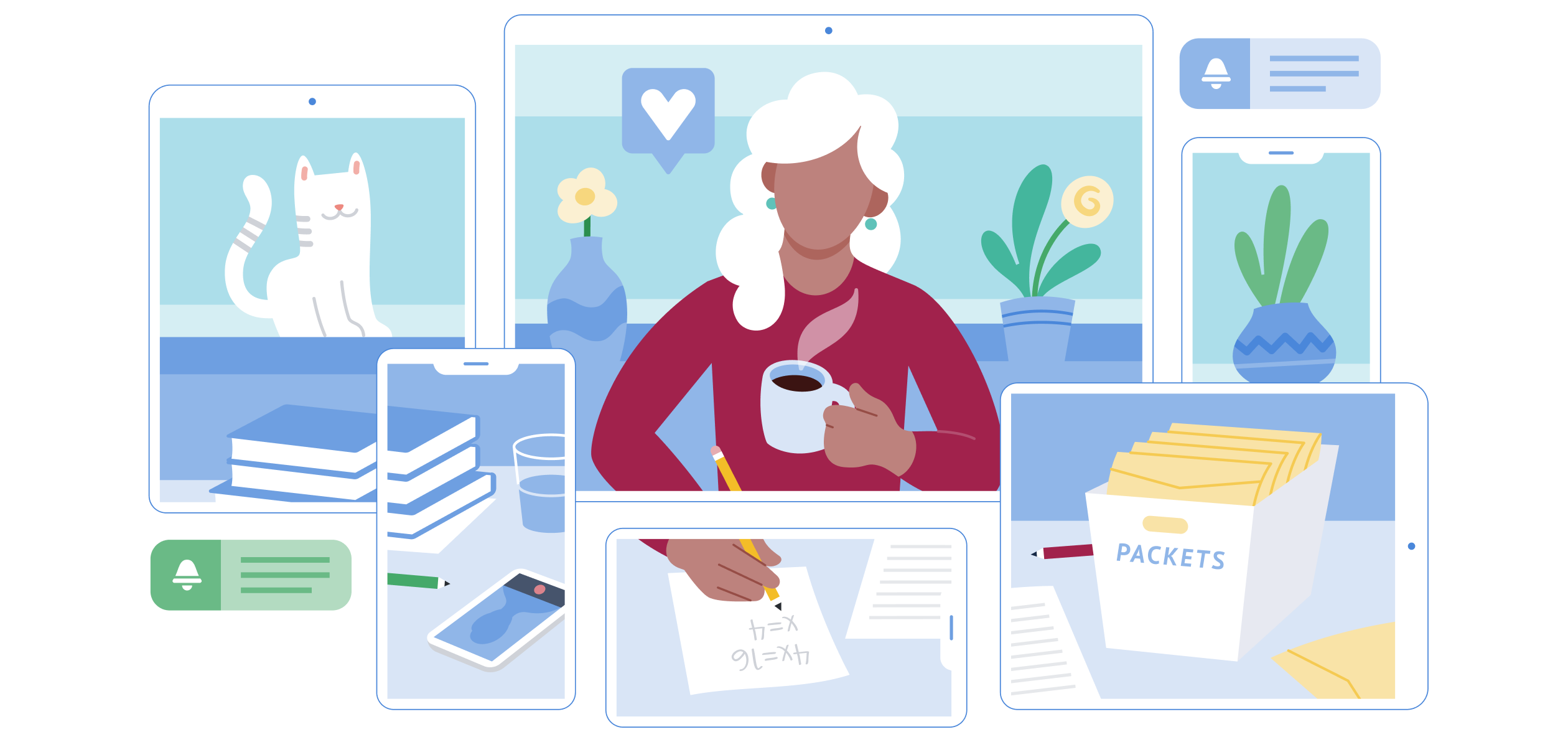



Anecdotally, October is one of the hardest months for teacher morale—something we’ve heard from teachers in our community as well as team members who used to teach.
And that was before 2020.
This year, COVID has made October exponentially more difficult for teachers. Between the additional work required for distance learning and in-person instruction alike, frequent changes, and challenging personal situations, burning out is more of a possibility than ever.
We’ve put together some best practices for using Remind to connect with your teachers, build relationships, and provide meaningful support: this month in particular, but also through the rest of an especially tough year.

Let your teachers and staff members know that they have a line of communication to you for questions, problems, and ideas. On Remind, you can enable replies in a staff class or invite your staff to message you. Like all communication on the platform, personal contact information won’t be shared, and a message history of every conversation is always available to download.
If you set up two-way communication for teachers and staff, it can also be helpful to establish expectations for availability and follow-up. You can use office hours to indicate the best times for teachers and staff to send you messages, when you’re free to respond, or any other process that might work for you.

Personal messages can often feel much more supportive than general announcements to a class or a group. As an administrator, you can always reach out to staff members in a one-on-one conversation on Remind; you can also send a note separately to multiple people at once. Here’s a rundown of the different types of messages on Remind.
These conversations don’t always need to provide solutions or even encouragement. Sometimes, just asking someone how they’re doing and being open to listening can go a long way.

Scheduling may not be the first (or third) thing that comes to mind when it comes to providing support, but streamlining communication can help create consistency, avoid information overload, and make sure your teachers have enough time to prepare for changes.
Try designating a regular channel—and even time of day—for updates from you and your team so teachers know where to find the latest information. To save time, you can schedule messages in advance and use our integrations with Google Drive, Microsoft OneDrive, Smore, and more to link to longer updates or newsletters.

Before scheduling a meeting, think about what you’d like the outcome to be—and whether you can achieve the same goal with announcements or group conversations. This goes especially for larger meetings, any meetings where the main purpose is to share out information, and video conferencing in general. (“Zoom fatigue” is real, especially if it’s already required for distance learning.)
A good rule of thumb is to consider the time and bandwidth for everyone involved; shorter and more direct forms of communication are often just as effective as facetime. And for one-on-one conversations, it’s as easy to make a voice call on Remind as it is to send a message.

New tools aren’t easy to learn, which isn’t just stressful for teachers—it can affect adoption and effectiveness, too. Look for opportunities to leverage what your teachers are already using, from extending Remind organization-wide to integrating popular tools like Google Classroom, Canva for Education, Kahoot!, and more.
For Dan Layton, Chief Technology Officer at Zionsville Community Schools, this played a key role in how his district successfully transitioned to distance learning in the spring:
“The one piece we really went back to a lot was this: Let’s not start something new in the middle of a crisis,” he said. “If we’ve got tools the whole district knows how to use, let’s make sure every single one of our teachers has those.”
Share how you’re using Remind with us on Twitter, and take care of yourselves and your communities this fall—we’re here to help in whatever way we can.
